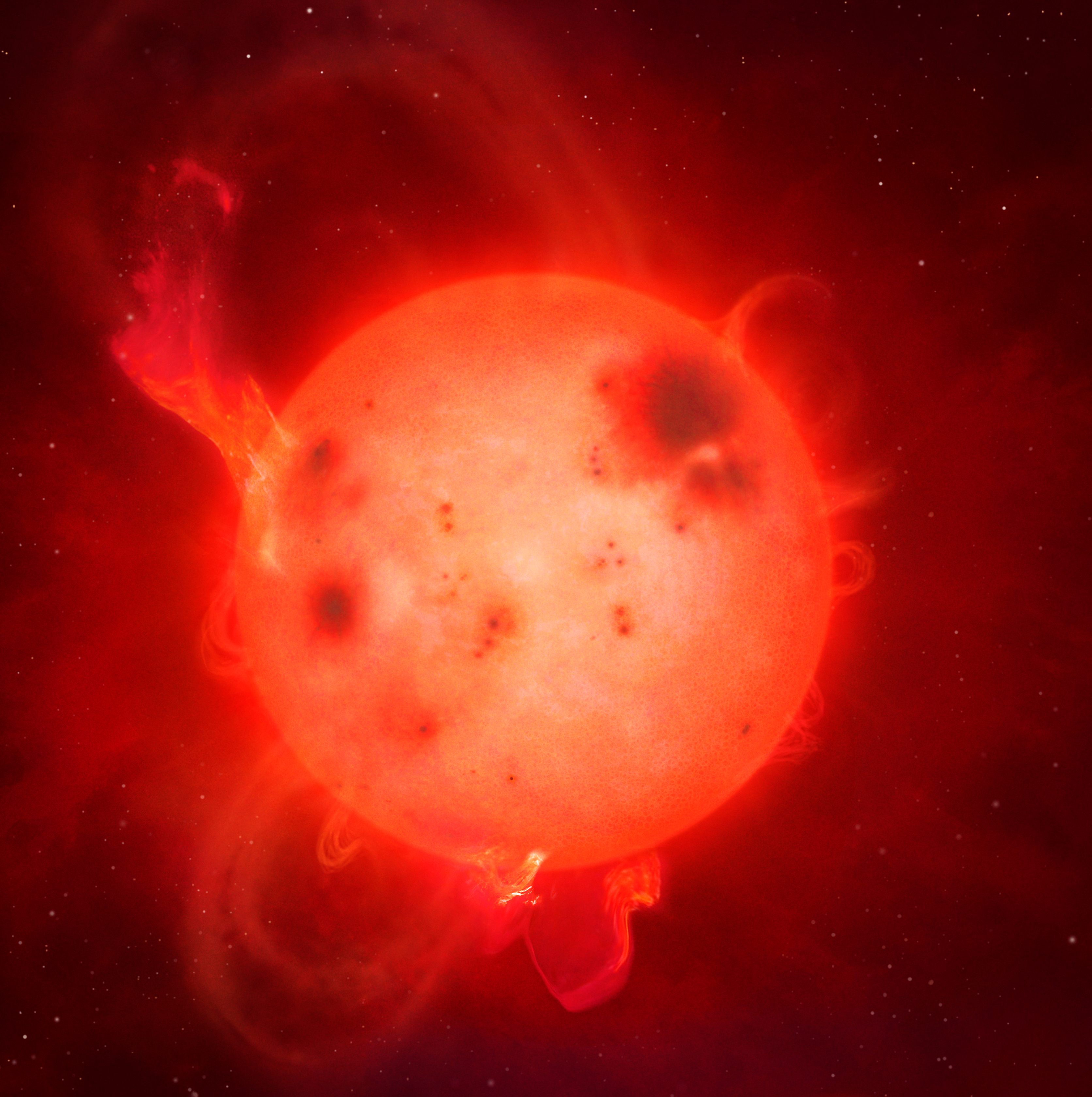An Incredibly Powerful White-Light Superflare Erupted from a Small, Faint Star

Some 250 light-years away, a powerful magnetic explosion erupted from a tiny, faint star.
It's the coolest and smallest star that scientists have observed emitting a rare white-light superflare — a sudden eruption of magnetic energy that unleashes huge quantities of radiation, according to a statement from the University of Warwick in the U.K.
The superflare, 10 times more powerful than similar explosions on our own sun, released energy equivalent to 80 billion megatonnes of TNT. Yet the star that unleashed this magnetic firestorm has a radius only a tenth the size of our sun's radius. [Top 10 Star Mysteries]
In fact, it's the lowest mass object that can still be considered a star, though it lies in the transition region between a typical star and a substellar object called a brown dwarf, according to the statement. Astronomers call this object an L dwarf star (and it goes by the charismatic title of "ULAS J224940.13-011236.9") — and telescopes can't usually detect its faint light.
A group of astronomers happened upon this strange star during a survey of surrounding stars, when the superflare made it 10,000 times brighter than usual, according to the statement. They then used various star survey facilities, such as the Next Generation Transit Survey (NGTS) at the European Southern Observatory's Paranal Observatory, to record the brightness of the star over 146 nights.
"It is amazing that such a puny star can produce such a powerful explosion," co-author Peter Wheatley, an astronomy and astrophysics professor at the University of Warwick and leader of the NGTS, said in the statement. "This discovery is going to force us to think again about how small stars can store energy in magnetic fields."
What's more, detecting these superflares can help scientists probe how life could potentially form on surrounding planets, he said.
Get the world’s most fascinating discoveries delivered straight to your inbox.
For life to form, you need chemical reactions to take place, and so you need a certain level of ultraviolet (UV) radiation. Typically, these stars emit in infrared and not in UV or visible wavelengths, as hotter stars do, lead author James Jackman, a doctoral student at the University of Warwick, said in the statement. But these superflares allow those weaker stars to emit a burst of UV radiation, which "might kick-start some reactions."
The findings were published on April 17 in the journal Monthly Notices of the Royal Astronomical Society: Letters.
- Supernova Photos: Great Image of Star Explosions
- Gallery: Our Amazing Sun
- Photos: Sunspots on Earth's Closest Star
Originally published on Live Science.

Yasemin is a staff writer at Live Science, covering health, neuroscience and biology. Her work has appeared in Scientific American, Science and the San Jose Mercury News. She has a bachelor's degree in biomedical engineering from the University of Connecticut and a graduate certificate in science communication from the University of California, Santa Cruz.


